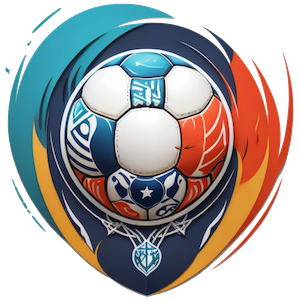Inter Miami’s 4-0 loss to Paris Saint-Germain (PSG) in the Club World Cup round of 16 offers far more than a mere scoreboard summary. It serves as a stark yet illuminating glimpse into the vast gulf separating North American soccer from Europe’s elite — but also underscores the potential for growth and evolution within Major League Soccer (MLS). PSG’s victory was never surprising; as reigning European champions, their dominance was expected, yet the manner in which the game unfolded highlighted systemic disparities, tactical nuances, and the challenges MLS clubs face when stepping onto a truly global stage.
Luis Enrique’s PSG displayed a refined brand of football, characterized by patient buildup, ruthless positional awareness, and clinical execution. Joāo Neves’ early goal, assisted by Vitinha’s free-kick, set the tone immediately. The attacking cadence—with PSG racking up 19 shots and almost half on target—revealed a team that not only outclasses but out-thinks its competition. Against such precision, Inter Miami appeared overwhelmed, exposing MLS’s limitations in depth, tactical sophistication, and adaptability under high-pressure international play.
The MLS Model Under Scrutiny
The loss reignited discussions about the inherent structural restrictions MLS imposes on its teams. The league’s roster rules, salary caps, and designated player allocations often skew team composition toward a “star-heavy” lineup complemented by less experienced or lower-salaried players. Inter Miami epitomizes this reality, boasting global icons like Messi, Luis Suárez, Jordi Alba, and Sergio Busquets, yet relying heavily on academy graduates and younger talents like Cremaschi, Redondo, and Allen for support.
This imbalance fosters competitive disparities not only domestically but glaringly on the international stage. Former Inter Miami coach Gerardo “Tata” Martino critiqued the league’s roster limitations as “hindering” in global competition, emphasizing the difficulty of fielding truly deep squads. The Club World Cup exposed this flaw graphically: injuries to key young players like Noah Allen forced makeshift defensive lineups, resulting in mistakes such as own goals and disciplinary issues. As Mascherano pointed out, limited transfer windows and league constraints left Miami vulnerable against PSG’s robust and well-rounded squad.
Bright Spots and Growing Pains
Despite the heavy defeat, it would be disingenuous to label Inter Miami’s tournament performance as a failure. Far from it. The Herons became the only MLS team advancing to the knockout stage and secured a famous upset over Porto, proving MLS clubs can compete intensely and occasionally outplay traditional powerhouses. The young core — players cultivated within Miami’s own academy system — gained invaluable experience facing world-class opponents both from UEFA and CONMEBOL. This baptism by fire against the likes of PSG and Palmeiras has equipped these players with insights impossible to glean in domestic competitions alone.
Lionel Messi’s influence transcended goals; his presence attracted attention, elevated team standards, and opened opportunities for younger players to develop under the mentorship of proven legends. Alba’s and Busquets’ roles in nurturing the squad were crucial in fostering growth, signaling that MLS teams can leverage veteran leadership to accelerate the development of homegrown talent.
What Inter Miami Represents for North American Soccer
Inter Miami’s trajectory is emblematic of the broader MLS ambition: to transition from a league viewed as a retirement destination for stars to one producing competitive, homegrown talent capable of challenging top international sides. Their record-breaking 2024 Supporters’ Shield campaign and Club World Cup performance reflect a promising blueprint: blend global superstar talent with a strong academy pipeline to build competitive squads able to sustain intense competition.
However, this path requires systemic reform. Without greater roster flexibility, increased investment in player depth, and more open transfer policies, MLS teams will continue to struggle when facing European clubs with expansive squads and years of tactical cohesion and experience. Jorge Mas cited the stark contrast between Miami’s strong starters and thinner substitutes bench as a decisive factor in international matches. This gap must be closed if MLS hopes to gain respect on the world stage beyond occasional flashes of brilliance.
Lessons From the Titans: The PSG Blueprint
PSG demonstrated why Luis Enrique’s management is regarded among the very best: uncompromising standards of fitness, tactical discipline, and collective work ethic. Alba’s comments on the importance of running and commitment underscore the professional environment PSG fosters — one where talent alone isn’t enough unless matched by relentless effort and strategic intelligence. For MLS teams, incorporating such intensity in training regimes and match mentality may be a critical ingredient for improvement.
Moreover, the ability to seamlessly rotate quality players without a drop in performance is a luxury PSG enjoys, spotlighting the importance of depth in a congested soccer calendar. This further pressures MLS coaches and front offices to rethink squad construction models that currently prioritize marquee signings over holistic robustness.
Embracing the Growth Mindset in North American Football
Inter Miami’s journey, marked by resilience and moments of brilliance, plants seeds for a future where MLS’s international competitiveness is more than aspiration. Exposure to brutal challenges — such as the demolition by PSG — serve as wake-up calls with actionable insights. Rather than representing despair, these experiences should ignite motivation for league-wide reforms: elevating youth development, liberalizing roster mechanics, and enhancing strategic recruitment and training.
MLS may never replicate the centuries-old soccer traditions of Europe or South America overnight, but by cultivating a culture of relentless improvement and facing elite opponents head-on, teams like Inter Miami demonstrate that growth is possible. Their campaign was not defined by final scorelines but by how they embraced the challenge, earned respect, and gleaned lessons critical to shifting the narrative of North American soccer toward unshakable credibility on the global stage.


Leave a Reply